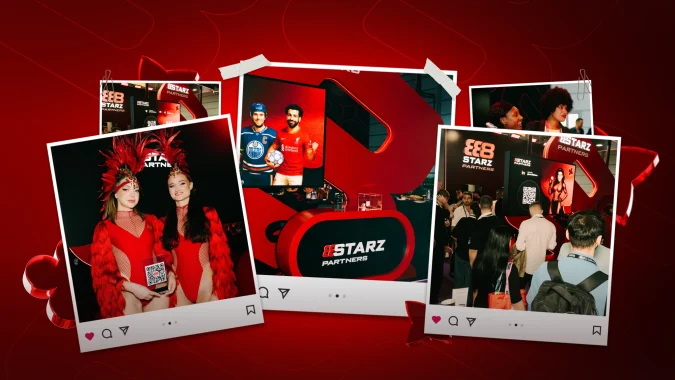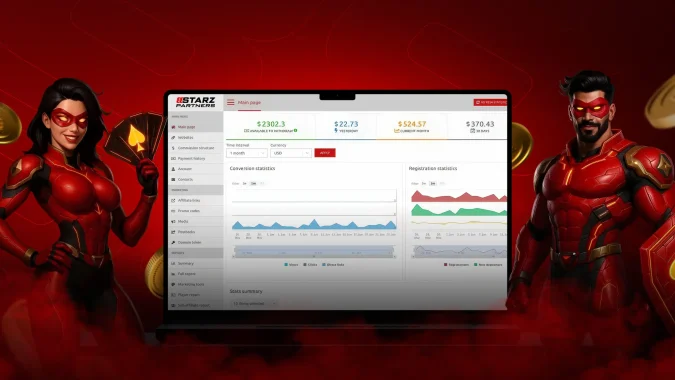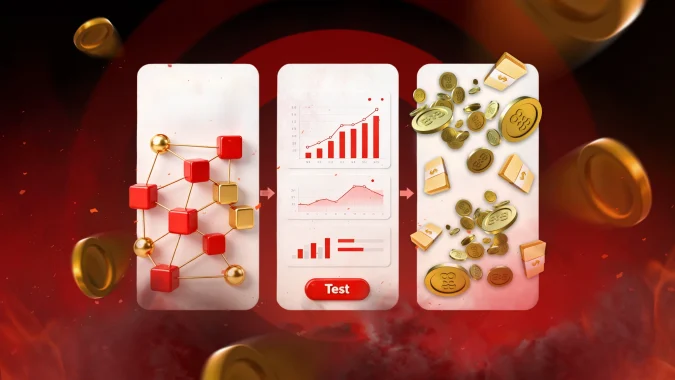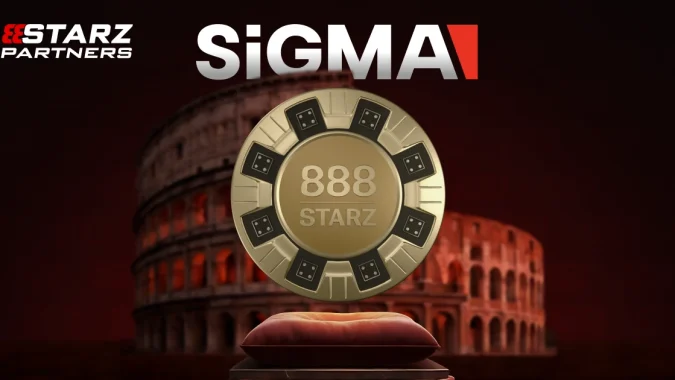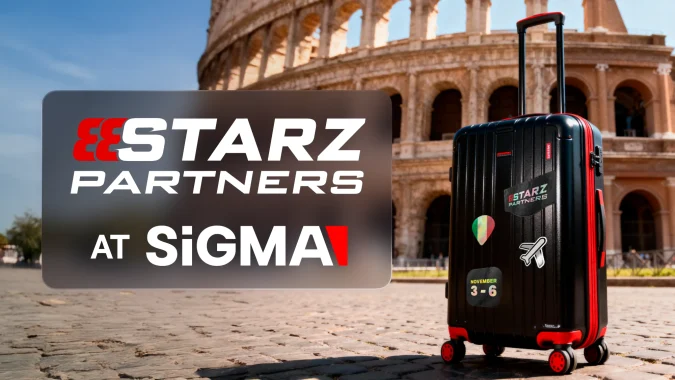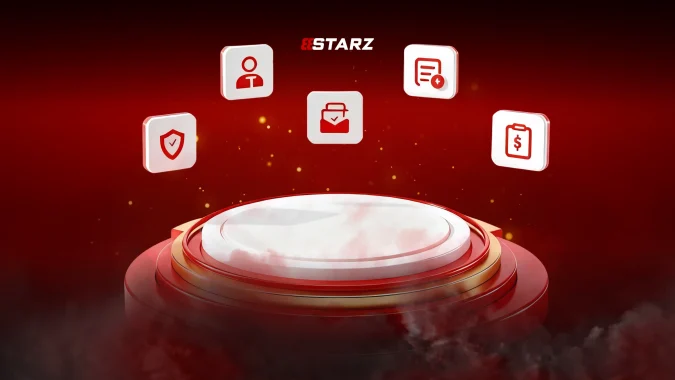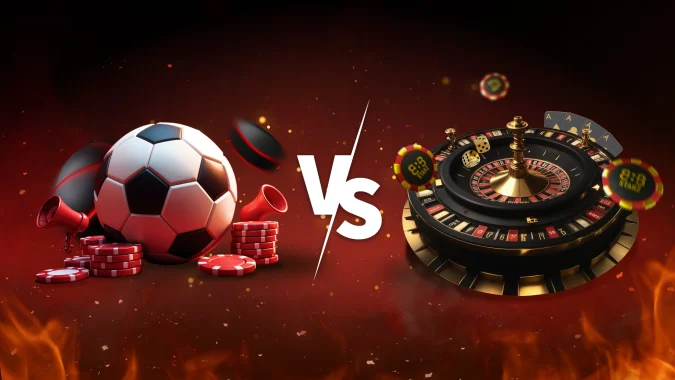Gambling in Affiliate Marketing: How to Calculate Your Break-Even Point and Actually Make a Profit
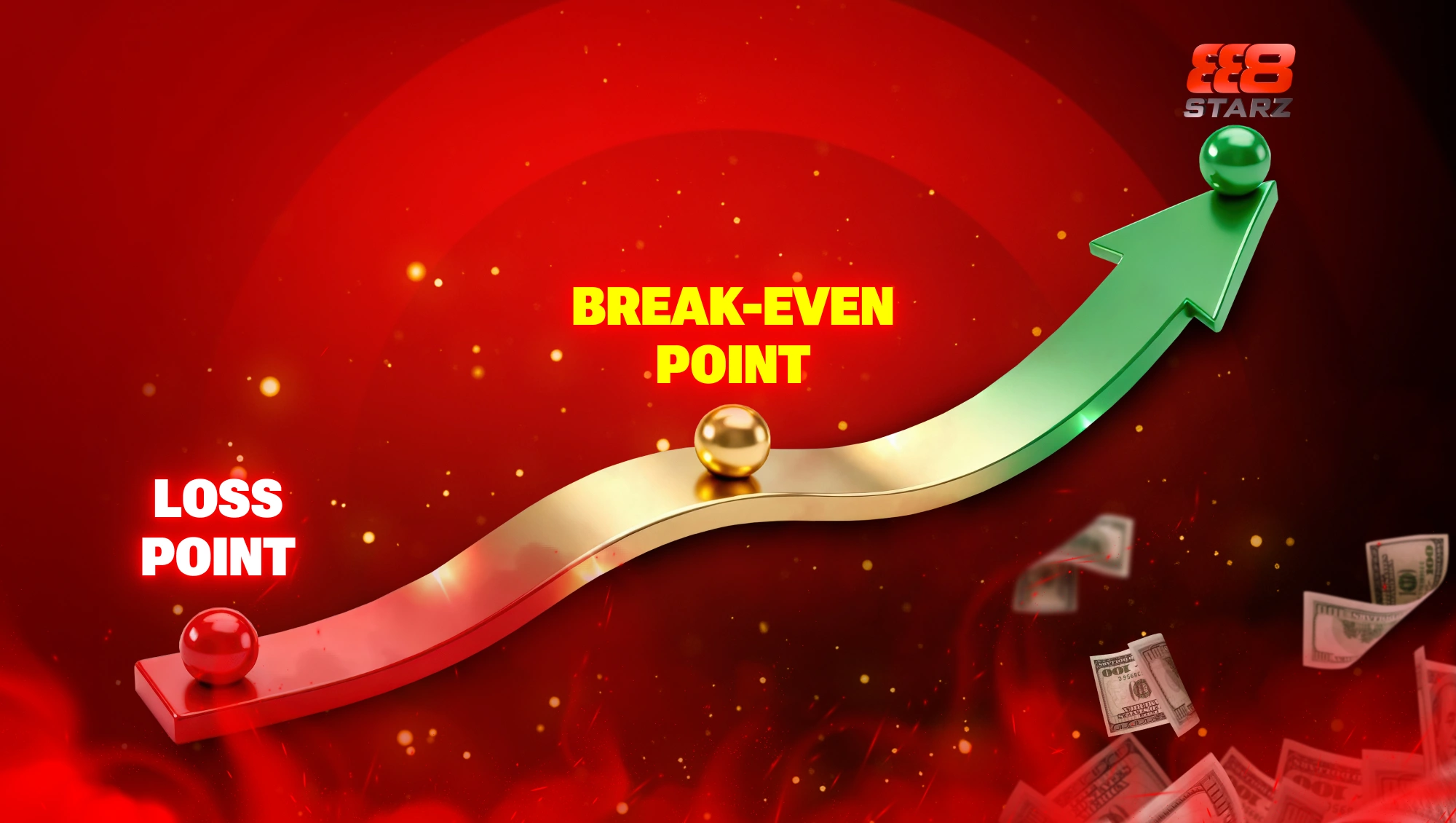
- Key Terms & Raw Data
- CTR (Click-Through Rate)
- CR (Conversion Rate)
- CPC / CPM
- CPA (Cost Per Action)
- ARPU (Average Revenue Per User)
- ROI (Return on Investment)
- Break-Even Formula in Affiliate Marketing
- BEP for CPA
- BEP for RevShare
- Example of BEP Calculation (Using a Test Budget)
- Scenario A — Pure CPA (Instant Revenue)
- Scenario B — RevShare (Long-Term Revenue)
- CPA vs. RevShare: What Else You Need to Understand
- Financial Funnel: From Clicks and FTDs to Repeat Deposits and Long-Term LTV
- Leads: Not All Registrations Are Equal
- Repeat Leads and Hidden Revenue
- Post-Registration Behavior and LTV Forecasting
- Optimizing Beyond BEP+: What Actually Moves Your Campaign Into Profit
- Risks & Assumptions: What Can Break Your Break-Even Analysis
- 1. Volatile Core Metrics
- 2. Holds, Chargebacks & Payment Delays
- 3. Shaving & Hidden Filters
- 4. Attribution & Postback Errors
- 5. GEO-Specific Payment Issues
- 6. Insufficient Sample Size
- 7. Human Error
- Conclusion
- Frequently Asked Questions
In affiliate marketing, it’s not just the clicks and conversions that matter — the real profit is built across the entire funnel. And if you run gambling traffic purely on gut feeling, that’s the fastest way to burn money. Estimating budgets “by eye” and ignoring basic financial math almost guarantees you’ll end up throwing cash into the fire.
It all starts with the break-even point (BEP). This isn’t just another formula — it’s the checkpoint that separates a test from the decision to scale or shut it down. This matters especially in gambling, where profit often doesn’t come from the first deposit but from what happens later: will the player return in a week? In a month? How much will they deposit or lose over time (their LTV)?
In this article, we’ll go through practical steps, not theory: which metrics you actually need, what formulas to use for CPA and RevShare, how to run a $1K test, and how to understand where your BEP sits — the exact point where you break even — and what to do next to turn the campaign profitable.
Key Terms & Raw Data

Before we jump into how to calculate BEP, you need a proper data set — the core metrics without which the math simply doesn’t work. A common mistake among affiliates is only counting half the numbers (like CPC and CPA) and ignoring Reg2Dep or the average player value. That turns analysis into pure guesswork.
Below are the main metrics you should know and track from day one.
CTR (Click-Through Rate)
The percentage of clicks out of total impressions. It shows how well your ad creative connects with the audience. A high CTR means people click — but it doesn’t guarantee deposits.
CR (Conversion Rate)
Conversion rates on the registration and deposit steps. You essentially have two CRs here:
- CR Click → Registration: how well your landing/pre-landing converts.
- CR Registration → Deposit (reg2dep): the key metric in gambling. This is where most funnels fall apart: tons of regs, barely any deposits.
CPC / CPM
- CPC (Cost Per Click): how much you pay per click.
- CPM (Cost Per Mille): cost per 1,000 impressions. In affiliate marketing, CPC is more useful and easier to connect with registrations and deposits.
If you want to learn more about CPC and its importance for affiliates, follow this link.
CPA (Cost Per Action)
A fixed payout for a target action (usually FTD — first deposit). Simple model: bring a depositing player — get paid.
ARPU (Average Revenue Per User)
Your average player revenue. Critical for RevShare models where your payout depends on long-term value. Without ARPU, all predictions are blind.
ROI (Return on Investment)
Return of Investment is your main profitability metric:
ROI = (Revenue − Spend) ÷ Spend × 100%
ROI above 0% means you’re in profit; below 0% means you’re losing money.
By the way, you can get most of the most precise and clear data with the help of:
- Affiliate dashboards: registrations, FTDs, average deposits, retention.
- Trackers: clicks, conversions, funnel breakdowns, GEO/device insights.
- Ad platforms: impressions, CPC/CPM, CTR.
Every piece matters. Without Reg2Dep and ARPU, your BEP math will always be off. You can have a 20% CTR and 1,000 regs — but if you get zero deposits, the funnel collapses.
Now before launching any funnel, you should make sure you track and confirm the basics:
- Test budget: how much you’re ready to spend without expecting profit.
- CPC: verify in the ad platform.
- CTR: get a baseline from the first creatives.
- CR Click → Reg: check how the lander performs.
- CR Reg → Dep (reg2dep): the KPI that makes or breaks gambling funnels.
- CPA or RevShare terms: your actual payout per player.
- ARPU: average revenue per unit (critical for RevShare).
- Holds & approvals: how long payments take and what % gets approved.
Pro tip: aim for at least 50+ FTDs before relying on any profitability calculations. Anything earlier is just noise.
Break-Even Formula in Affiliate Marketing
Your break-even point will always depend on the payout model you’re working with.
BEP for CPA
This one is straightforward. The calculation follows simple logic:
BEP = Budget ÷ CPA
Budget is the amount you spend on casino ads, while CPA is the fixed cost you receive per first deposit. For example, if you invested $1,000 in testing and your CPA rate is $50, you need 20 first deposits to break even. Starting from the 21st, you’re already in profit.
BEP for RevShare
This part is trickier because your income depends on player behavior. The formula looks like this:
BEP = Budget ÷ (LTV × Reg2Dep)
Here, LTV represents the average revenue per player, and Reg2Dep is the percentage of registrations that convert into deposits. Take a $1,000 budget again: if LTV = $80 and 30% of 100 registrations deposit (Reg2Dep = 0.3), then:
1,000 ÷ (80 × 0.3) = 41.6 → ~42 registrations
Meaning you need roughly 42 registrations, of which around 30% will deposit (about 13 FTDs), to cover your spend. Anything above that becomes net profit.
Important: RevShare shows its true value only after 2–6 months — once players start making repeat deposits and continue playing actively. Because of this, RevShare BEP is a forecast, not an instant metric. We break down more reasons why RevShare typically outperforms CPA in our comparison of both models.
Example of BEP Calculation (Using a Test Budget)

Let’s start with a simple set of assumptions — the variables you’ll actually see in your tracker and your affiliate dashboard:
- Test budget: $1,000
- Cost per click (CPC): $0.50
- Click → Reg conversion (CR): 5% (0.05)
- Reg → FTD (reg2dep): 20% (0.20)
- CPA payout per FTD: $80
- RevShare: 35% of NGR
- Monthly ARPU (net gaming revenue per active player): $50
- Expected player lifetime: 3 months → LTV = $50 × 3 = $150
These numbers are only an example — always adjust CPC/CR/Reg2Dep/LTV to match your own data.
Now, let’s calculate the actual funnel for this test run:
- Clicks = budget ÷ CPC = 1,000 ÷ 0.5 = 2,000 clicks
- Registrations = clicks × CR = 2,000 × 0.05 = 100 regs
- FTD = regs × reg2dep = 100 × 0.20 = 20 FTD
Scenario A — Pure CPA (Instant Revenue)
- Revenue = FTD × CPA = 20 × $80 = $1,600
- Profit = Revenue − Spend = 1,600 − 1,000 = $600
- ROI = (600 ÷ 1,000) × 100% = 60%
Now let’s calculate the CPA break-even point — how many FTDs you need to reach zero:
BEP_FTD_CPA = Spend ÷ CPA = 1,000 ÷ 80 = 12.5 → round up → 13 FTD
Meaning: if you get 13+ FTD on a $1k test, the CPA campaign is already breaking even or profitable.
Scenario B — RevShare (Long-Term Revenue)
- LTV (3 months) = $150
- Price per FTD = LTV × RevShare = 150 × 0.35 = $52.5
- Revenue for 20 FTD = 20 × 52.5 = $1,050
- Profit = 1,050 − 1,000 = $50 → ROI ≈ 5%
BEP under RevShare:
BEP_FTD_Rev = Spend ÷ (LTV × RevShare) = 1,000 ÷ 52.5 ≈ 19.05 → round up → 20 FTD
In this example, you generated exactly 20 FTD — meaning RevShare barely covers the spend. But the real income comes later (months 2–6), when players start depositing again and show consistent activity.
CPA gives speed and predictability. RevShare gives long-term upside. Regardless of the model, one rule always stands: don’t scale until you’ve cleared BEP and moved into profit territory.
Now here’s some practical 5-point checklist:
- Don’t draw conclusions from fewer than 20 FTDs; for LTV evaluation, aim for 50–100.
- If after 2k clicks you have fewer than 10–12 registrations, the traffic source is weak — stop the campaign.
- Compare your tracker with the affiliate panel: a >5% mismatch in FTDs is a red flag that needs investigation.
- With RevShare, always manage cashflow: payouts are monthly, holds and chargebacks can zero you out instantly.
- A wrong LTV is a common trap. If players stay 1.5 months instead of 3, your whole model collapses. If they stay longer, track that too — it matters.
And one more thing: if you’re working on RevShare, plan your cashflow ahead. Even if the math works, the revenue arrives slowly — part in a week, part in a month, while expenses hit you every day. Without a reserve or more frequent payouts, you can easily run into a cash gap.
CPA vs. RevShare: What Else You Need to Understand
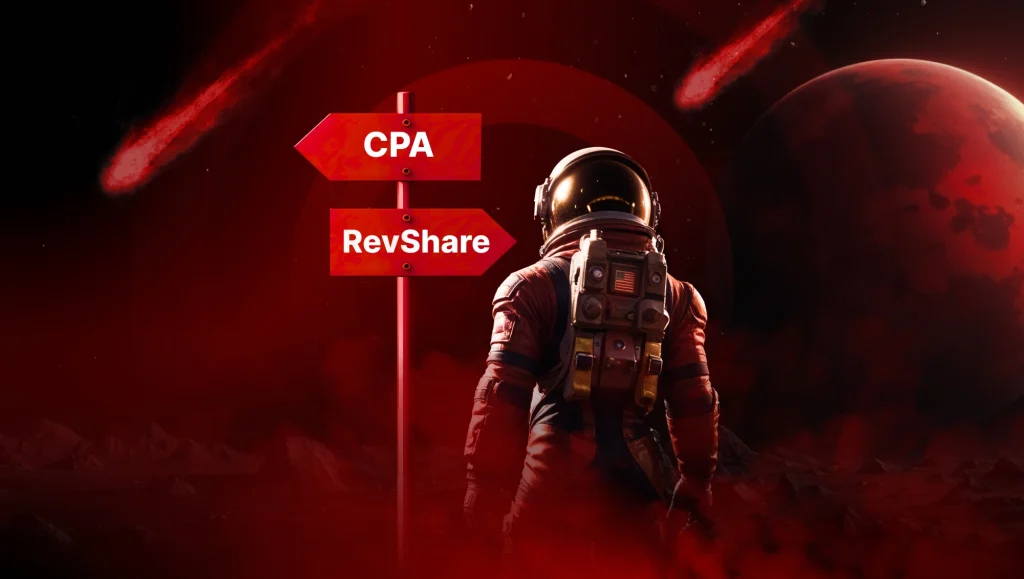
Based on the scenarios above, the picture is pretty clear:
The CPA model means fast money. You know exactly how much you earn per FTD, you calculate your BEP_FTD_CPA (13 FTD for a $1k test in our example), and once the numbers line up, you can scale gradually. The upside is obvious — payouts come quickly, usually without holds, and there’s no need to wait for long-term LTV. The downside? Your income is capped. No matter how long a player keeps depositing afterward, you don’t get a cent beyond the fixed cost.
RevShare is all about long-term value. The BEP is higher (20 FTD in the example), the start feels heavier, and early ROI looks weak. But if your traffic brings in real players who deposit for months, LTV will push your ROI far beyond any CPA deal. The key here is managing expectations: RevShare isn’t about quick profit next week — it’s about stable income over time. You also need to control cashflow carefully: revenue comes in gradually, while expenses hit daily, and holds or delayed payouts can easily choke your budget.
Hybrid deals are a solid middle ground. You get a fixed amount per FTD (covering part of your variable costs) plus a share of the player’s deposits. It’s a good safety cushion when testing new traffic sources or when you want to balance risk and long-term upside. If you want detailed conditions for Hybrid deals at 888STARZ Partners, reach out to your account manager.
The simple rule of thumb here will be next: If your traffic is fast but unstable (browser push, teasers, pops) — go with CPA and lock in guaranteed cash. And when your traffic is high-quality (Meta, Telegram, YouTube, organic, apps) and you’re ready to wait 2–3 months for stronger ROI — RevShare is where you get the real value.
Financial Funnel: From Clicks and FTDs to Repeat Deposits and Long-Term LTV
One of the biggest mistakes affiliates make is focusing only on their CPA or RevShare BEP and completely missing where the budget actually leaks inside the funnel. Money can burn long before the first deposit ever happens. The core metrics to keep an eye on are:
- CTR (Click-Through Rate). For cold audiences, a healthy CTR usually starts from about 2.5%. Anything lower means the creative hook, or angle simply isn’t landing.
- eCPC (Effective CPC). Not just the ad network’s CPC, but the real cost of traffic after all expenses. If your eCPC is already higher than your BEP, the campaign will bleed from day one.
- Traffic Quality Score (TQS). Page depth, bounce rate, IP quality, session duration. Even an expensive click can be profitable if the audience is actually interested and sticks around.
Every click should be marked with SubID/ClickID. To evaluate any funnel, you always look at three things together — CTR + CR + eCPC. If TQS is weak and your “attention cost” (eCPC ÷ CTR) keeps climbing, no payout in the world will save the ROI.
Leads: Not All Registrations Are Equal
A registration on its own means very little. You need to distinguish between soft leads (sign-ups) and hard leads (first deposits). Key metrics:
- Conversion Rate. How many clicks actually turn into registrations.
- Approval Rate. How many leads the advertiser actually approves (can vary from 40% to 95%).
- Payout-to-CR Ratio. How the payout relates to the number of registrations you’re generating.
Example: CR = 1.8%, CPA = $3. Looks profitable on paper. But Approval Rate = 42%. Your real eCPA jumps to $7+, while player LTV is only $2.7. Final result: the campaign is losing money even though the dashboard makes it look good.
Repeat Leads and Hidden Revenue
In gambling, dating, finance and other similar niches, the same user may convert again — through another funnel, offer or casino/bookmaker. That’s not a duplicate. That’s extra revenue affiliates often miss.
How to track it:
- Compare SubID with device ID or hashed email;
- Track repeat leads in your tracker;
- Count the share of returning users.
Example: A player converts once, then 14 days later makes another conversion in a different offer. Their LTV jumps from $2.5 to $5.8. Ignoring repeat leads can easily kill 10–15% of your potential profit.
Post-Registration Behavior and LTV Forecasting
Real analytics begin after the sign-up. If a player doesn’t return within 1–3 days, the chance of depositing drops dramatically. Key engagement metrics:
- Retention R1 / R7 / R30
- 2+ transactions (the first sign of loyalty)
- ARPU (your base for forecasting LTV)
- Churn window (average “lifetime” of a player)
Example: Retention R1 = 22%, R3 = 10%, R7 = 4%. That means 80% of players “die” within the first three days. No promising CR will save a funnel with this kind of drop-off.
LTV should always be calculated on a cohort basis. Basic method: ARPU × retention. Advanced method: cohort analysis over 30–90 days (relevant mainly for RevShare). In short, BEP is not just a formula. It’s an entire financial funnel — from click to reg to FTD to long-term player value.
Optimizing Beyond BEP+: What Actually Moves Your Campaign Into Profit

Breaking even is fine — but affiliates don’t make money in BEP. They make money past BEP, when each dollar invested starts returning more than it costs. Once you see that a setup breathes and at least covers itself, the next step is pushing it into stable profit. Here are the levers that actually shift the economics.
Creatives & angles
Same GEO, same offer — totally different results depending on how you frame the message. Test formats (video vs static), tones (playful vs straight), and angles. Even a 0.2% CTR difference can flip a campaign from neutral to positive. Watch for creative fatigue — rotate assets, track CTR decay, don’t assume a visual will live longer than 48–72 hours.
Pre-landers & funnels
Driving traffic straight to the offer page rarely unlocks its full potential. A strong pre-lander can boost reg2dep 2–3x by warming up the user, explaining the bonus flow, and removing friction. Don’t stick to one template — test length, structure, trust triggers, and storytelling.
You can learn more about creating high-converting prelands and even more via this link.
Load speed
A 1–1.5 second delay kills both CTR and CR, especially on low-bandwidth GEOs. Compress assets, clean up code, and host your landers where your audience actually is. Speed is part of your conversion rate — not a technical afterthought.
Payment flow & lander UX
Everything collapses at the deposit step if the payment path is broken, slow, or requires a local ID. Test payment flows manually through local proxies. UX clarity on the deposit step is often worth more than the entire pre-lander.
Segmentation
Never treat traffic as one bucket. Split by GEO regions, devices, OS, WiFi/4G. Sometimes Android brings cheaper FTDs while iOS delivers higher long-term value. Tiny slices often reveal where the real margin hides.
Tracking accuracy & postback validation
Always verify click → reg → FTD using transaction_id, not aggregated dashboards. More than 5% discrepancy means your data isn’t reliable enough to scale. Blind scaling kills bankrolls.
A/B testing
Nobody hits the winning combo on the first try. The right way: constant micro-tests, small budgets, and strict fixation on setups that deliver consistent profit — not random spikes.
Cohort analysis & predictive LTV
Don’t rely on average LTV; it hides the truth. Look at cohorts. Some funnels bring short-lived depositors; others return profit over weeks. Cohort LTV determines the real value of your traffic.
Cashflow reserve (especially for RevShare)
Have liquidity at least for 2–3 payouts. Holdups, delayed payments, and chargebacks are normal — don’t let them choke your flow.
Retention & LTV management
Critical for RevShare setups. If the affiliate program offers retention tools (push, email, bonus triggers) — use them. On 888STARZ we provide GEO-specific promo packs and retention materials, which boost LTV and stabilize ROI.
Quick BEP+ readiness checklist:
- Tracker ↔ Affiliate program match: ≤5% FTD discrepancy
- FTD count ≥ BEP_FTD × 1.1 for 3 stable days
- Reg2Dep & CR within ±20% of forecast
- Payment flow tested through local GEO proxies
- Cashflow reserve for 2–3 payouts (RevShare)
- Auto-rules for pausing/bidding adjustments configured
If all boxes are checked — your campaign is genuinely optimized and safe to scale.
Risks & Assumptions: What Can Break Your Break-Even Analysis
BEP is a control point, not a safety net. It’s fragile and can collapse the moment external factors shift. Here are the main traps affiliates consistently underestimate.
1. Volatile Core Metrics
CR and reg-to-dep can swing hard — seasonality, creative fatigue, payment issues, GEO-specific behavior. Today your reg2dep is 20%, tomorrow it’s 10%, and suddenly your BEP is gone. Any conclusions based on 3–5 deposits don’t mean anything. You need 20 FTD minimum for a rough read and 50–100 FTD for a realistic LTV calculation.
Triggers & actions:
- Reg2Dep drops 30% vs baseline → immediate pause on the traffic source + payment flow check.
- CR drops 20% → review creatives, pre-lander and lander; run fresh A/B tests.
2. Holds, Chargebacks & Payment Delays
A classic: you’re “in profit”, but the affiliate program puts a 30-day hold, delays payout, or starts shaving deposits with chargebacks — and suddenly your entire cashflow is dead. To avoid starving your campaigns, keep a 2–3 payout reserve, especially on RevShare.
Always confirm with your manager (in writing form):
- chargeback window
- payout schedule
- hold terms
- the exact format of reconciliation
And if you want to avoid this headache altogether — choose a partner program that operates transparently from day one.
If you want to start working with a proper affiliate program right away, check out our detailed guide on how everything should be done.
3. Shaving & Hidden Filters
The worst scenario: your tracker shows one FTD count, the affiliate dashboard shows something completely different. If the gap is above 5%, that’s already a warning sign.
To stay in control:
- log transaction_id, timestamp, and deposit amount
- keep all conversations with your manager
- demand explanations for adjustments
And if the program cuts your deposits manually with vague “rules”, that’s not a misunderstanding — it’s a red flag. Of course, you can ask for explanations with proof, but most likely, the only correct solution here is simply to switch partners. We’ve also covered the key points for choosing a program in our blog earlier.
4. Attribution & Postback Errors
Broken click_id, missing fields, failed delivery, race conditions — and suddenly your analytics is pure fiction. The fix is simple:
Run a pilot of 50–100 clicks at the start and verify each deposit by ID in both the affiliate tracker and the panel. Log all postbacks and store raw logs — non-negotiable. Ideally, enable:
- postback retries
- queues
- delayed redelivery
One early bug caught = thousands of dollars saved later.
5. GEO-Specific Payment Issues
Every country has its own quirks. Some GEOs reject most card transactions. Others convert only through local wallets. Result: traffic comes in, deposits don’t.
Before launching:
- test the deposit path manually (or through a local proxy)
- ask your manager about payment pitfalls
- confirm which payment methods are actually alive in that GEO
6. Insufficient Sample Size
A top affiliate mistake: making decisions based on “gut feeling” or tiny data sets.
With <20 FTD you’re not reading stats — you’re reading noise.
The rule of thumb:
- <20 FTD → don’t calculate anything
- 50–100 FTD → enough signal to model LTV and projection curves
7. Human Error
Many failing campaigns aren’t about math — they’re about forgetting simple things:
no spend limits, no creative rotation, no segmentation, no auto-rules.
Easy fix:
- use launch checklists
- enable auto-pauses
- set notifications for KPI drops
- automate everything that can be automated
Conclusion
Your break even point isn’t a formality — it’s the main checkpoint that decides whether your campaign survives or burns money. Until you know exactly where you hit zero, you’re not in a position to talk about profit or scaling. Affiliates who work with numbers instead of intuition always end up ahead: they see when the funnel actually works, where the budget leaks, and which campaigns deserve a bigger investment.
Gambling affiliate marketing isn’t complicated economics — it’s basic math, and BEP is the tool that tells you where the loss stops and the upside begins. But to make it work, you need all variables on the table: CPC, CR, Reg2Dep, LTV, traffic stability, affiliate program transparency, and reliable payment flows.
That’s why choosing a trustworthy partner program matters. When stats are transparent and payouts follow clear rules, you can plan ahead, avoid painful cashflow gaps, and confidently move past the break-even point into real profit. If you want to stay out of deep negative cycles and instead build predictable, scalable campaigns, join 888STARZ Partners program.
Here you get everything you need for quality affiliate marketing: a clean tracking dashboard, odds API, localized casino & betting creatives, promo support, and stable payment solutions built for high-volume affiliates. So reach out to your account manager — they’ll walk you through all the details.
Frequently Asked Questions
How do you calculate BEP for CPA?
The formula is simple: BEP_FTD = Spend ÷ CPA payout. If you spent $1,000 on traffic and your CPA is $75, then you calculate 1000 ÷ 75 = 13.3 → round up to 14 FTDs to break even. Anything above that is profit.
Just keep an eye on your reg-to-dep rate: if you’re getting registrations but they don’t convert into deposits, the whole unit economics collapses — even if the top-line numbers look good.
How many FTDs do you need to calculate BEP for CPA accurately?
At least 20, ideally 50+, so the “noise” evens out and you see the real performance.
How do you factor RevShare into the calculations?
RevShare is more complex because it depends on player LTV (their total lifetime value). The formula is: Revenue = LTV × RevShare × FTD. For example, if LTV = $150 and your share is 35%, then one FTD brings $52.5. With 20 FTDs, you get $1,050. Subtract ad spend and calculate ROI. The catch is next: real LTV only reveals itself over distance — usually 50–100 FTDs and 3–6 months of activity.
Why does RevShare look unprofitable at the start?
Because revenue comes from LTV, which builds up over time. The first months can be break-even or even negative, but later the setup often becomes strongly profitable.
Which metrics matter most for BEP?
CPC, CR (to registration), reg-to-dep, CPA or RevShare rate (and ARPU/LTV for RevShare). The biggest mistake affiliates make is focusing on clicks and registrations but ignoring reg-to-dep. That’s where economics usually breaks. You can drive 100 registrations, but if only 5 deposit — the campaign will never pay off. Always calculate the break-even point across the full chain: clicks → registrations → FTDs → revenue.
What if the test doesn’t go positive?
First — don’t rush. Anything below 20 FTDs is just noise. If after 50 deposits the funnel is still negative, look for weak points: maybe CPC is too high, maybe reg-to-dep is below market, maybe player LTV underperforms.
Sometimes the fix is straightforward: change creatives or switch GEO. If the economics don’t line up even theoretically (BEP can’t be reached), stop the source and adjust your approach. One rule: log every test in Excel or your tracker, so you don’t repeat the same mistakes.
What’s more important — ROI or BEP?
BEP is the first checkpoint. Get to break-even, then evaluate ROI and scale from there.
Can you skip the formulas and do everything by gut feeling?
You can — but expect to burn money. The formulas are simple and actually save your budget.




